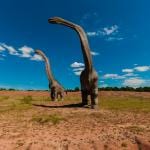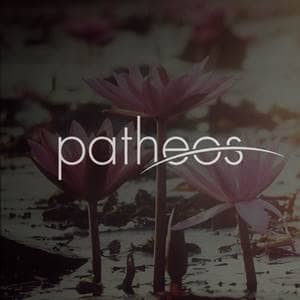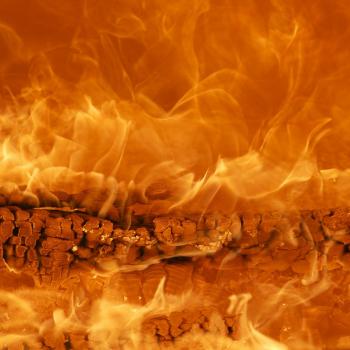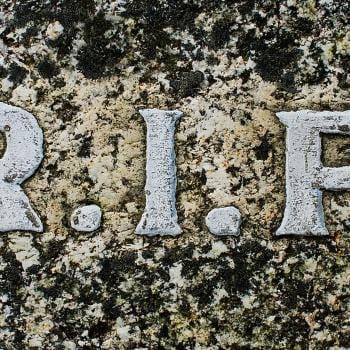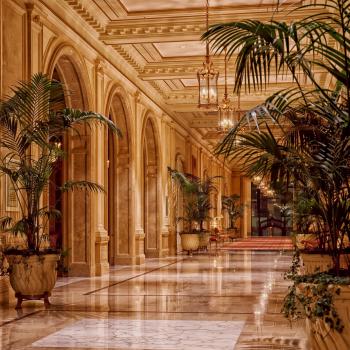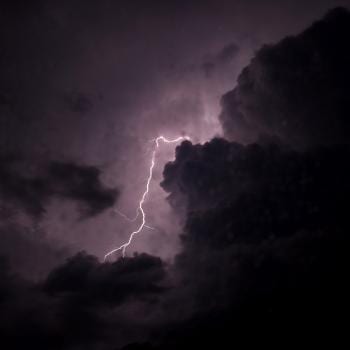Door in the Dragon’s Throat, pp. 50-57
So, they have finally found the Door. Peretti puts it like this:
So they found what they had come for, whatever that was. But first things had to come first. Tends, shelters, and temporary storage buildings were quickly set up at the edge of the Dragon’s Throat, and the hotel rooms in Zahidah were no longer kept reserved. Jeff managed to feel and deal some old lumber from a slightly shady supplier in the city, and for the next few days the crew worked a very effective string of ladder sand stairways down the steep sides of the cavern to the sandy floor below. A powerful gas generator provided electricity not only for the campus, but also for strong floodlights all along the cavern corridor to the big room where the Door still waited to be challenged.
Jeff’s use of a “shady supplier” begs questions—why not go through a legitimate outfit? But then, I imagine this racism and orientalist in practice—the implication may be that all outfits in this part of the world are shady.
There’s something else to notice too. They have not yet used a seismometer to measure seismic activity in the area. They have done nothing to try to identify the source of the earthquakes, or a way to measure and monitor them—despite the fact that they already almost died in an earthquake while exploring the cavern. And despite, well, this:
Throughout this time, whenever the sound of hammers, saws, or voices would cease for a moment, that strange rumbling sound could still be heard. Interestingly, it always grew louder and a little higher in pitch whenever someone got close to the Door; and not only that, but even the earth seemed to get nervous, shaking and quivering.
This seems like something to look into. But no! See, these aren’t real archaeologists! These are sloppy treasure hunters who dress up like Indiana Jones and occasionally take their hats off to pray. And it gets worse.
First, though, Gozan drives back to meet with President Al-Dallam about their progress, and Al-Dallam is impatient. Gozan insists that “these explorers, these Christians, could be different indeed,” but Al-Dallam wants that treasure now.
“But, my liege, they are still alive. Maybe their God will help them to open the Door as well.”
At that comment, the president couldn’t help enjoying at least one moment of glee. “Yes … yes, perhaps the great Door will finally be opened, and the fabulous wealth hidden there will be mine … uh … will belong to the people of Nepur. Such wealth will make us as great as the other states belonging to our people. Ha! Let them have their oil! We will welcome the nations of the world to come and look upon our vast, priceless treasures.”
This is just gross. President Al-Dallam is such a one-dimensional cut-out. Gozan responds with a bit of concern. He’s somewhat worried that what lays behind that door may not be treasure, but some great evil. Gozan, of course, is right.
Back on the site, Gozan accompanies Dr. Cooper down to the door, which is now illuminated by floodlights. Dr. Cooper prepares to climb the rubble to get a better look at the massive door, but Gozan is not so sure.
“Good doctor,” Gozan pleaded, “the … the earth shakes every time anyone gets near the Door. The Door knows we’re here.”
Dr. Cooper casually inventoried the tools in his toolbar, handed the bag to Gozan, and said, “Gozan, one of these days I’m going to have to give you a bassi lesson in exactly what causes earthquakes. Believe me, people don’t cause them.”
And there it is again—Gozan suggests that the phenomenon may be supernatural and Dr. Cooper dismisses his concerns as unscientific and built on superstition. Earthquakes are caused by ordinary seismological phenomenon, Dr. Cooper insists dismissively. But of course, these ones are not. These ones are not natural at all. Peretti is too engaged in writing a story about western science v. superstitious orientalism to realize that he’s got it exactly backward—it’s like he doesn’t remember until later that he’s writing a book where the science is wrong and the superstition is correct.
Gozan suddenly squeaked in fright.
“Not again!” Dr. Cooper moaned.
The cavern was beginning to shake once more.
Dr. Cooper is an idiot.
“What did I tell you, doctor!” Gozan said with a quivering voice. “What did I tell you! The Door! It knows we are here!”
“Oh, stop it!” Dr. Cooper ordered.
The shaking stopped—just like that.
As far as Gozan was concerned, even this sudden silence was scary. “The earth! It heard! It obeyed you!”
Dr. Cooper only shook his head. “Come on, let’s go.”
No interest in investigating. Nothing. No concern that the quake may start again when he’s halfway up the rubble. No concern that he might leave his two children orphans.
Dr. Cooper proceeds to climb the 40-foot high pile of rock and rubble up to the door, with Gozan following. When they reach the door, they find it’s warm to the touch. They also realize that that odd humming sound and feel is coming from the door.
They leaned toward the door and listened. It was unmistakeable. From somewhere behind the monstrous Door, deep within the earth, came that strange sound. From here it was better defined, with more complex overtones: a very low droning, with many different whirring, humming, and higher pitched rushing sounds.
“It sounds like a horrible beehive,” Gozan observed.
“For lack of a better description,” said Dr. Cooper, his ear close to the Door’s surface. “Could be air currents … perhaps geothermal expansion and contraction … maybe nothing more than a swarm of bats. I’ve never heard anything like it before, but it does reverberate throughout the cavern and most certainly originates here.
This seems like a good moment to take a pause and do some study. Dr. Cooper suggests that it may be bats, but he also says he’s never heard anything like it before, and I assume he has probably heard bats before. Is he not interested in investigation?
At this point, Dr. Cooper takes out a brush he brought and begins to clean a portion of the door.
“Bronze. Ancient hammered bronze, But what kind of primitive technology could have formed anything so huge?”
Do archaeologists still use the term “primitive technology”? Why not say “ancient technology”?
Also, is it just me, or is this the sort of thing where he might be able to consult with some fellow archeologists? Or maybe he should find someone whose expertise is in ancient bronze working? I’m going to assume that archeologists specialize.
Dr. Cooper hands Gozan and scraper and asks him to help clear the dirt off the door. As they do, they uncover writing.
“An unusual writing style, but it could be a form of Babylonian. It does fit that kind of construction. Maybe I can make it out.”
Dr. Cooper points to a symbol and says it means star. He points to another and said it means “heaven, the upper atmosphere, the sky,” and then he points to another symbol which means “falling, flying, behind hurdled.” He puts it all together to mean “the star that flew through heaven.” This, they both conclude, indicates Nimrod.
I had to turn to an earlier passage of the book to work this one out, because there’s nothing on google tying Nimrod to a star that flew through heaven. Way back on page 21, Dr. Cooper mentions “the legend that brought me here.”
“The legend about the great star that used to sail across the heavens, that plundered the earth and hid his treasure deep within it.”
Gozan says that that’s only one story of the Dragon’s Throat, and that other stories about the Door are far more frightening and full of terror, as well as more popular among the people, but Gozan’s comments didn’t bother Dr. Cooper.
“[I]t could be the only one with a germ of truth in it. You see, Nepur is not that far from the location of ancient Babylon, the ancient kingdom of Nimrod mentioned in the Bible—Genesis chapter 10. … Nirmrod was a powerful ruler, regarded by his people as a deity. He plundered the earth and no doubt amassed an incredible treasure. If the legend and my interpretation of it are true, there could at least be a wealth of knowledge hidden here, new information from the early history of man right after the days of Noah.”
It was Dr. Cooper, in other words, who connected the Nepurian legend of a star that fell from heaven with Nimrod, not the Nepurians. So now, when he finds an inscription he deciphers ass “the start that flew through heaven,” Dr. Cooper concludes that this refers to Nimrod—that Nimrod’s treasure is behind the door. This feels hasty and speculative, because again, I can’t find a story about a star falling from heaven connected to Nimrod. There isn’t even such a story in the Bible.
Here is the sum total of what the Bible says about Nimrod:
Cush [Noah’s grandson] fathered Nimrod; he was the first on earth to be a mighty man. He was a mighty hunter before the Lord. Therefore it is said, “Like Nimrod a mighty hunter before the Lord.” The beginning of his kingdom was Babel, Erech, Accad, and Calneh, in the land of Shinar. From that land he went into Assyria and built Nineveh, Rehoboth-Ir, Calah, and Resen between Nineveh and Calah; that is the great city.
There are other stories about Nimrod, of course, apart from the Bible—you can read about them here—but again, nothing about a star. Dr. Cooper, by the way, is going to turn out to be very, very wrong here. The star that fell from heaven—a legend which, again, has no connection to Nimrod that I can find—is actually the star prophesied in Revelation 9:
The fifth angel sounded his trumpet, and I saw a star that had fallen from the sky to the earth. The star was given the key to the shaft of the Abyss. When he opened the Abyss, smoke rose from it like the smoke from a gigantic furnace. The sun and sky were darkened by the smoke from the Abyss. And out of the smoke locusts came down on the earth and were given power like that of scorpions of the earth. They were told not to harm the grass of the earth or any plant or tree, but only those people who did not have the seal of God on their foreheads. They were not allowed to kill them but only to torture them for five months.
Dr. Cooper is not only a terrible archeologist, he’s also a terrible reader of the Bible. He connects the star that fell from heaven to Nimrod for literally no reason—there’s nothing about this in the Bible—and doesn’t so much as crack a concordance, which would have brought him to this passage in Revelation. This is not a small mistake. Back on page 21, Dr. Cooper also said this:
“I make it my business to search out the remains of civilizations the Bible talks about. The information I uncover is invaluable to Bible scholars.”
Which, of course, is just lovely. But also, he’s currently doing horribly at it.
Either way, Gozan and Dr. Cooper are now both convinced that behind the door is the treasure of Nimrod, weird sounds and vibrations be damned. Dr. Cooper notices that there’s more to the inscription, and translates as follows:
“Key. Here’s the word for key. ‘The start that flew through heaven … uh … holds … has brought … no, will bring the key, and all … will be released.”
Neither of them stop to wonder what might be released. Instead, they are both jubilant. They have found the treasure of Nimrod!
Dr. Cooper was already thinking ahead. “We’ll have to get this pile of rubble away from the Door. Go tell Jeff and Bill to bring the blasting equipment.”
Gozan hesitates, and suggests to Dr. Cooper that perhaps the two of them should keep things quiet, and share the treasure. There’s this entire conversation where Dr. Cooper gets more and more frustrated at Gozan, who is attempting to make a deal with him where the two of them will share the treasure. I’m not even sure how that would work — how is he proposing they get it out of the country, especially if they have to screw it past Jeff, Bill, and Tom? It doesn’t make sense.
But see, Peretti wants Gozan to be a greedy money-hungry little man willing to backstab anyone he’s ever known in order to get wealth and riches in his hands. It’s only when Dr. Cooper threatens to tell President Al-Dallam that Gozan drops it.
Before we close, let’s return to this idea that Dr. Cooper could translate those inscriptions on the door just like that. “It could be a form of Babylonian,” he said. So I looked it up. The Babylonians used a modified form of cuneiform, which they borrowed from the Sumerians and then modified to fit their own language, Akkadian.
Here is a sample of cuneiform:
Here is an Akkadian inscription:
Based on what I’m seeing online, if Dr. Cooper had studied Akkadian (the Babylonian language), he might have been able to pick out the words of the inscription as he does in this passage. But again, archeologists specialize, and I’ll just note that Dr. Cooper has also done Egyptian tomb excavation (does he know Egyptian hieroglyphs too?), and that he also does digs later in the series in South America, sub-saharan Africa, and the Pacific islands. At one point, he’s even called to the old American west, to investigate a ghost legend that includes some odd rock carvings. And you can’t specialize in everything. There just isn’t time.
There’s another question I have, though. What else is on the door? It’s this huge bronze door, but it’s not bare but for this one inscription, is it? Dr. Cooper never takes time to examine the whole thing. He reads one inscription and sends for the dynamite. And remember—to read this inscription, he had to clean off dirt and dust. What else is on this door? Does he not even want to know?
Some archeologist he is.
I have a Patreon! Please support my writing!

